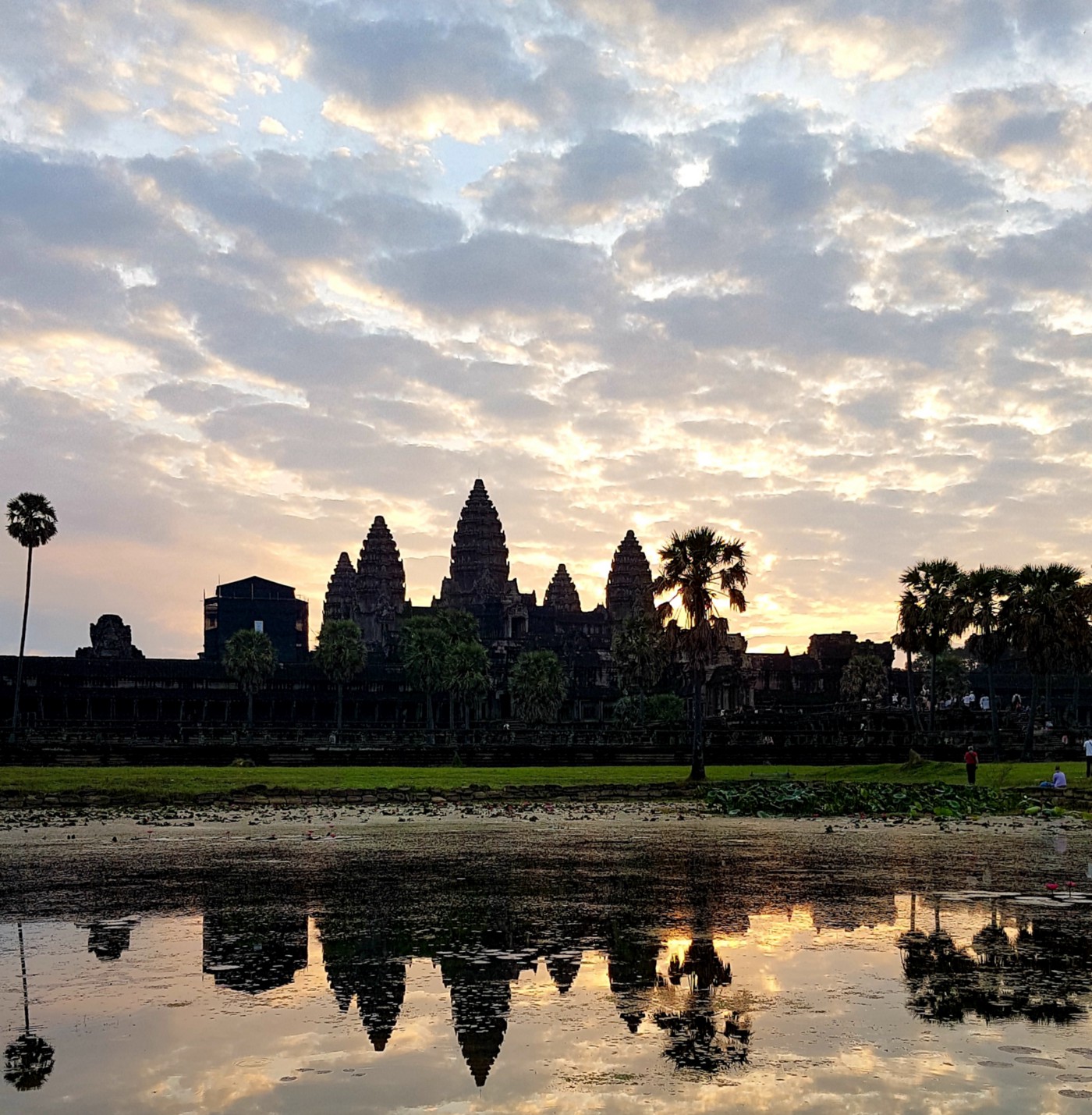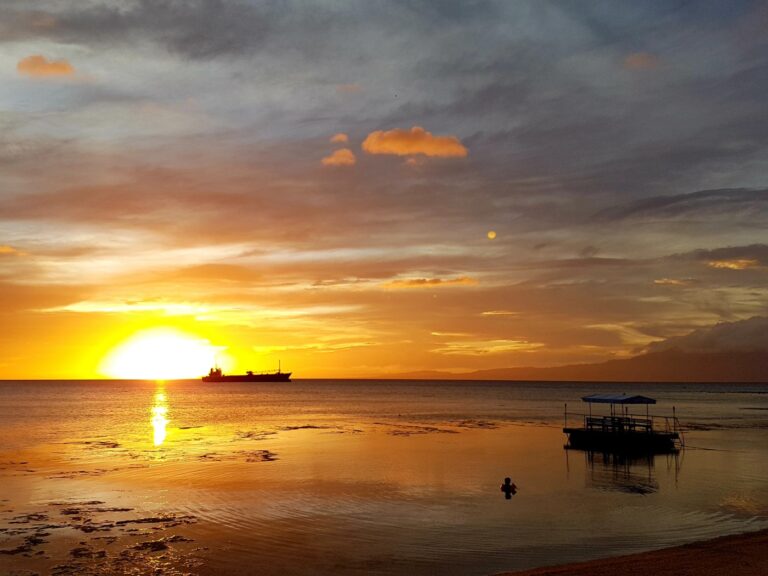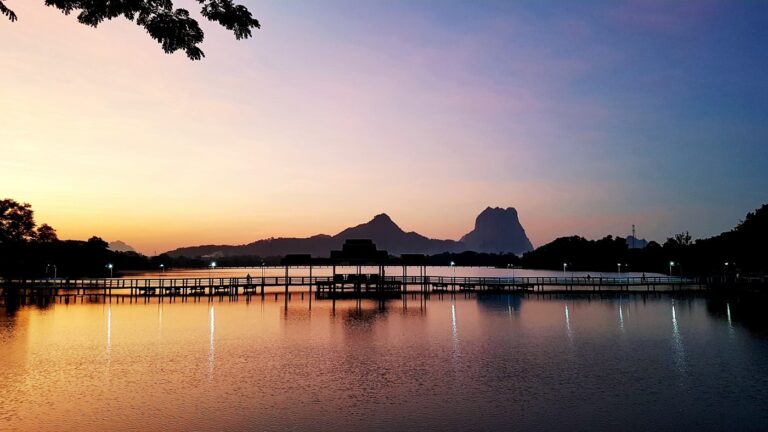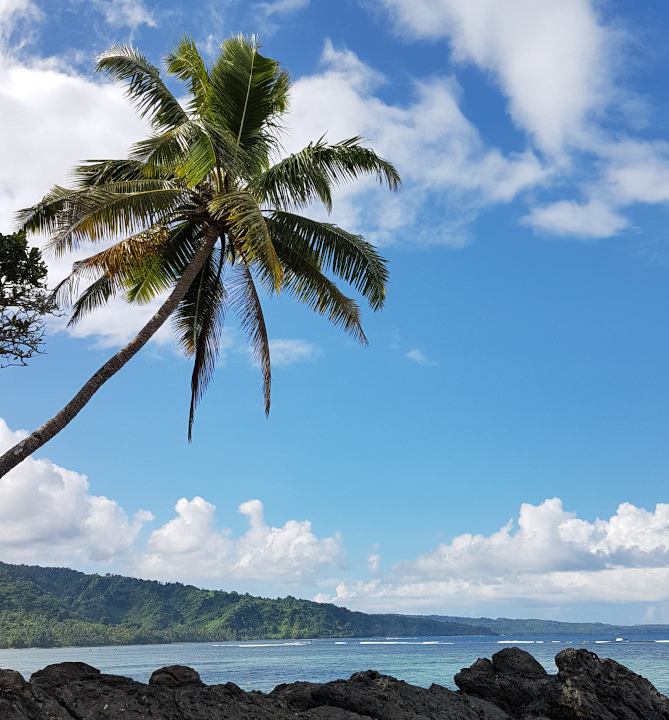(originally posted on Medium on Dec 13, 2019)
Reflections after 19 days in the country.
We entered Cambodia through the landport border with Laos. First destination was Siem Reap from where we explored the Angkor temples. We went on to Battambang where we roamed around in the country side and also participated in a Khmer cooking class.
By night bus we continued our travel to Kep; respectively we immediately added the boat trip to the Rabbit Island (Koh Tonsai). After a two day stay on this small island we went back to Kep and eventually also Kampot. We ended our Cambodia trip in Phnom Pen, from where we left by plane.
In detail, our itinerary was
- laotian border
-> bus on “new road” - Siem Reap
-> boat on Tonle Sap - Battambang
-> night bus to Phnom Penh, plus continuing day bus to Kep (purchased as package) - Rabbit Island
- Kep
- Kampot
-> train - Phnom Penh
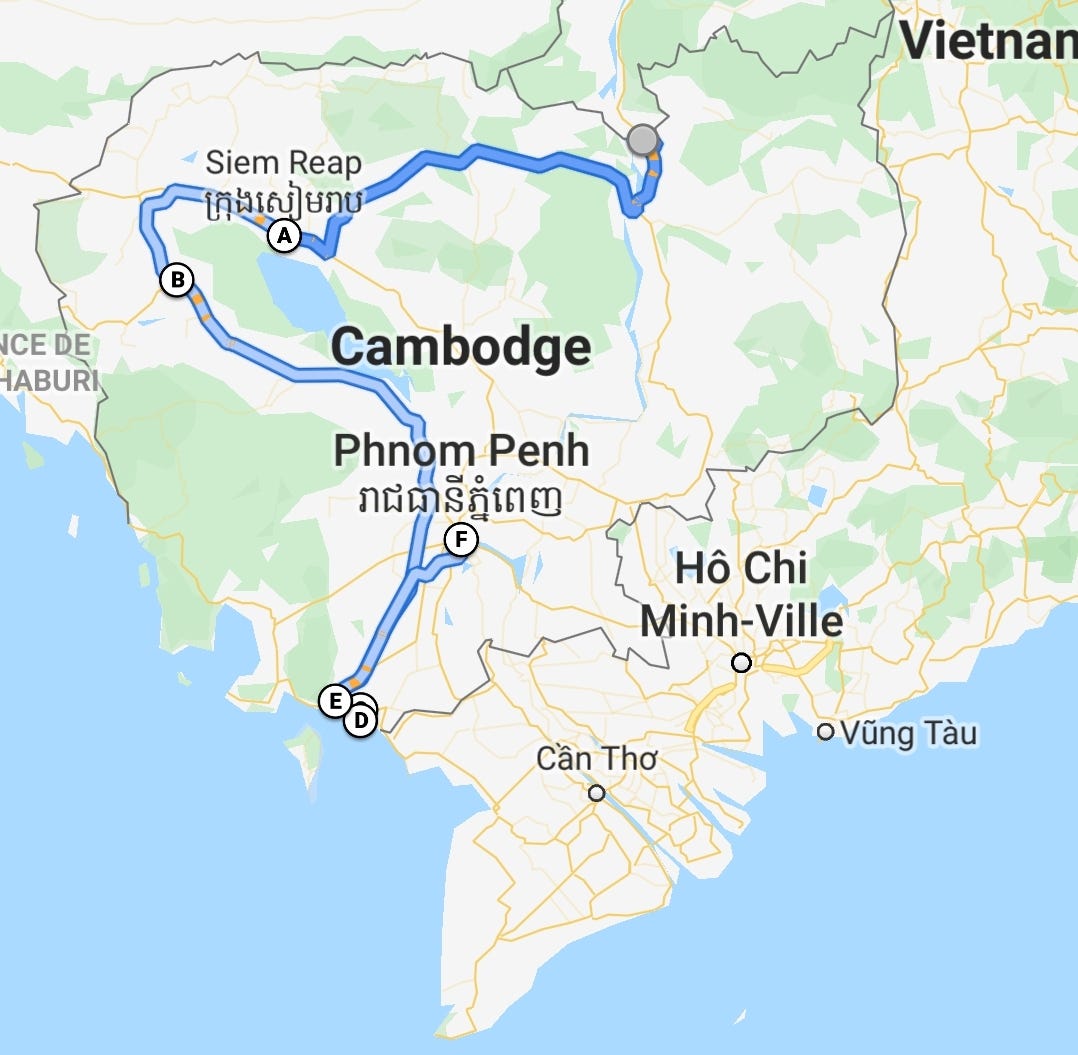
Hidden surprise gems
By chance, we came across several good surprises in the places we’ve been. These places aren’t secrets in any way. But we didn’t read about them before hand and were particularly positively surprised when we stumbled upon them.
Siem Reap: Kandal Village

Many blogs write about the nightlife in Siem Reap. Which means Pub Street and the night market. And those places are indeed worth a visit. However, during the day, there is an interesting quarter just next to Pub Street: Kandal Village.

Kandal Village is a quiet road with some chic boutiques and coffee houses with balconies and rooftops in the upper level (though, given it is day time, the sunny outside is too hot). The shops in Kandal Village are closed in the evening, so you indeed have to visit the place during the day.

When you’re there, try a coffee at the “Little Red Fox”: that was the best coffee we’ve had in a long, long time!
(They’re also on Instagram in case you need some more pictures 😉 https://instagram.com/thelittleredfoxespresso )
Apart from taking a coffee, there isn’t much to do in this village though. But it’s a very peaceful place. Ideal for cutting a busy multi-day Angkor visit.
Battambang: floating villages

If you go to Battambang, you likely do so after or before you visit Siem Reap. Suggestion: do this connection by boat.
Tonle Sap is the largest lake in asia. It is also home to several floating villages. Meaning, the locals live on the lake, in their houseboats. To get from A to B, to go grocery shopping, for anything really, they have to take their boats.
There are several floating villages on the lake. But judging from the comments on TripAdvisor those mostly turned into tourist traps.
On the trip to Battambang (/to Siem Reap, respectively) one can see the authentic lives of the locals. Along the river, the boat stops several times to take on local people coming in on their smaller boats or getting off. There aren’t official bus stops, only hand signs.
Of course, the trip from Siem Reap to Battambang doesn’t let you get off the boat to visit some of the houseboats. The only stop was at around noon in a shop where we could buy something to eat, and as a toilet break. But again, as a result you see real villages that are alive and not just tourist traps.

Kep: King’s Villa
In Kep, they have declared some of the abandoned villas, dating from before the war, to heritage buildings. We stumbled upon “King’s Villa”, which nowadays is simultaneously abandoned and maintained.

Several windows are broken, but we didn’t see any graffiti. Some of the walls are molding, but the floor seemed to be wiped regularly. Outside the mansion, there were several well cared for flower pots, and an entire flower garden on the slope facing Kep bay.
Visiting this place gives a weird feeling. It’s so calm and left alone, and yet it is maintained by someone.

For more photos, see my post on Instagram: https://www.instagram.com/p/B5kWf9iJ9Gy/?igshid=4zswr1uk9j4u

Kampot: train
Respectively, the train from Kampot to Phnom Penh.
We didn’t know anything about Cambodia’s train system. Nor did we ask ourselves any questions in this regard. One evening during dinner we got in a conversation with two retired europeans who live in Kampot for several years. They mentioned that there is a train connecting Kampot with Phnom Penh on the weekends (plus Mondays).

Since we in fact wanted to travel back to Phnom Penh on Monday, this was a real possibility. We’ve seen and experienced the “road” between Phnom Penh and Kampot already. Hence, we didn’t have to think twice about whether we wanted to take the train or not. The real question was much more, how to get on it.
Luckily, buying a ticker was very simple. We rented a scooter to explore Kampot’s environs, with a first stop at the train station. The train station is easy to identify on MAPS.ME. There they spoke good English (!) and handed us the tickets for the following day, along with a print out of the time table.

As we received the ticket we were a bit perplexed and unsettled: the “ticket” was a white piece of paper, completely written by hand; nothing that looked in any way or form official. But the ticket clerk ensured us (again: good English!) that it usually would be another kind of ticket. But the electricity was cut, so that he had to do it this way… The hand written ticket indeed did not pose any problem, and we had a convenient ride to the capital. The train is $7 per person.

A (not so) short aside: we may have been lucky that our ticket purchase went so smoothly.
On Monday morning we hailed a tuk-tuk to cover the few kilometers from our hostel to the train station. Now, this time getting there was much more complicated. It turned out the tuk-tuk driver didn’t know Kampot has a train station … go figure! But this we only realized once on the way. In the middle of the village he consistently took unexplainable turns. Initially we thought he might know about a better route than what we considered the shortest path.
Yet, we had to correct him, because we often headed in the completely wrong direction. Eventually he stopped at a place with a lot of taxi drivers whose English was good enough to explain our driver that we want to go to the train station. Except, understanding the name of our wished destination was only half of the problem. Knowing the name of something still doesn’t help much when you don’t know where it is. And so, we had to guide our driver all the way to the station.
In other words, buying a train ticket is easy if you’re on scooter. Or, if you at least find a tuk-tuk driver who knows where the train station is (and “yes, yes” and agreeing for a price of the drive doesn’t mean your driver knows where!). At the very least control your whereabouts with MAPS.ME or Google Maps.
Secondly, we went buying the ticket a day before the departure. We’ve seen people buying it on Monday morning itself, which is a feasible alternative (at least during the low season without too many tourists). The day prior may have been a lucky coincidence as we arrived at the station at the time of the Sunday train leaving for Phnom Penh. I don’t know about the opening hours of the ticket office.

Phnom Penh: night market
Phnom Penh is a large asian city and thus comes with the typical good and ugly. Some of the street corners are really ugly, like, really filthy. And on top of that, the food stalls there — sitting in midst their trash bags — display the same prices as the (good looking) restaurants just next doors. How the heck?
Luckily, that’s not all Phnom Penh has to offer. In the northern part of the city, between Wat Phnom and the Tonle Sap river there is a night market called “Phsar Reatry Night Market”.

This night market has two sections: one for food, one for clothing and the like. In the food section, there are several stalls offering several skewers. You choose the skewers you like ($0.50 per piece), then they bbq them and bring it to your carpet. Yep, there are no tables, but carpets. And you’re going to eat while sitting on the floor.


We liked this food area because the quantity and price are very transparent. You know what you get. Respectively, the first time around, you do not know what exactly it is that you chose. But the size and price very much invite for experimentation.
For dessert, you can get two scoops of ice cream for $1. There are also some freshly pressed cane sugar drinks, if you’re into that.
After diner, we can recommend a promenade along the Tonle Sap water front. The different lights in all kinds of colors give it a special something. Also along the water front you’ll see some people engaging in some open air aerobics or exercising on the public sports equipment.

Actually, generally moving around Phnom Penh on foot is interesting (during the day). There are so many different roads to be discovered. Plus, on foot you’re faster than by tuk-tuk: Phnom Penh is a developing city and several (too many) new rich people feel the need to present their oversized SUVs … which leads to congestions difficult to penetrate by vehicle, but easy to cut through while on foot.
Dark red history
There is nothing quite so convincing to learn about world history like traveling to important places.
We’ve recently been in Laos, where we have learnt about the lasting effects of the US’s carpet bombing during the Vietnam war. In Cambodia the destruction took even larger dimensions.
After the retreat of US troops from the region, the Khmer Rouge took over Cambodia (after the US bombings had nurtured the support for this political group…[*]). The Khmer Rough, in true Lenin/Stalin/Mao fashion, killed a lot of people. Like, really a lot. Like, 25% of the population lot!
Learning about such history while visiting places such as the killing caves in Battambang, the secret lake in Kampot, and S-21 (genocide museum, Tuol Sleng) in Phnom Pen is very powerful.
Sort of in preparation for S-21, we read the book “First they killed my father” by Luong Ung in the beginning of our Cambodia travel. The book does a good job in explaining the daily reality in the labor camps under the Khmer Rouge.
I wholeheartedly recommend it to people interested in visiting Cambodia. (Btw, the movie adaption of the book does a terrible job at explaining. Though, the images are powerful and might be seen as a complement to the book.) This book highlights the incompetence of Angkar governing the country and how the people died as consequence of this incompetence.
The genocide museum S-21 then brings in the aspect of how Angkar’s enemies got treated and tortured. This is an aspect of the Khmer Rouge regime that Luong Ung hinted at, but (luckily) wasn’t exposed to first hand. I cannot recommend this museum highly enough on what to visit in Cambodia (or at least Phnom Penh). The audio guide does a good job of bringing the prison to live.

The museum invites everyone to come and to learn about the atrocities humans are capable of, so that “we” (as a collective) don’t forget about it, and prevent from letting it happen again. In this notion, it is just too sad that many of the described practices in S-21 reminded me vividly of (comparatively recent) pictures from Abu Graib and Guantanamo.
[*] Essentially, the whole Irak/Afghanistan (respectively Taliban/ISIS) debacle. Only three decades prior…
People
The Cambodian people are generally nice, friendly, and helpful. The English level we encountered was high, which was very convenient. The people laughed a lot and had a lot of humor.
There is not much more to say. We very much enjoyed the interactions with the locals.
Prices and money
In Cambodia they work with a mix of two currencies: the local Riel and USD. At the time of our travel (Nov/Dec 2019) it was $1=4000 Riel.
Everything that costs more than $1 is paid in USD. The small change is dealt with using the Riels. For example, if you pay something that costs $3.50, you’d pay $3 + 2000 Riel. At times, this mix is difficult to deal with. Because of this, all prices are in steps of $0.25 (=1000 Riel) which makes calculation easier on a local market.
In a supermarket, this currency mix is taken to another level. There, the items have regular supermarket denominations. Like “$1.80”. But how are you supposed to deal with non-round numbers?!
Despair not: the cashiers have two input fields. One for the paid USD amount, and one for the Riels. Hence, you could pay $1 + 3500 Riel, which the computer evaluates to give you 300 Riel as exchange. Or you pay with a $5 bill, which returns a mix of $3 + 800 Riel.
Now, the mix in change money can get very creative. For example, the $3 + 800 could instead be in the form of $1 + 5000 + 3*1000 + 500 + 3*100. It all depends on the bills they have in the cash register. And then, there you stand with a lot of paper in your hands, and you have to figure out how they split the change, and whether it is indeed the correct amount.
Oh, and the different Riel bills look all the same (especially the old washed out ones). And you won’t get it back in a nice order. So the 5000 bill may be in the middle of the three 500 bills (which you count as 2000 and thus expect the rest to be 6800, but that can’t be…) and the 1000 between the 100.
Happy mental calculating!
The currency mix is weird, but I got used to it to some extent. Either way, this system has the advantage that in Cambodia you only have paper money and no coins: everything is in USD, but the coins are replaced by Riels.
Last quick tip regarding money: the ATMs give you the money in USD. But many banks have very low limits, for example max. $500 per transaction. Plus then there are fees on top of that (from the Cambodian bank plus your home bank…). We managed to get $2000 from the “J Trust Royal Bank” ATM with only $5 processing fee (plus our domestic). This was the best deal we found.
Price examples
Angkor pass (3 days, recommended): $62.
Street food in Siem Reap: $1-1.5
Restaurant in Siem Reap 2-3 streets away from Pub Street: same price as street food (for equivalent food)
Amok (~same for Lok Lak): $3-5
Fruit shake: $1-2
Kep crab menu: $5-8
Boat from Siem Reap to Battambang: $22
A bus trip for a distance such as Battambang-Kep: $18
Train Kampot-Phnom Penh: $7
Taxi: PassApp
If you need a tuk-tuk / taxi in Cambodia, don’t try to negotiate a price on the street. The taxi apps are very well developed; PassApp, Grab, etc. The market leader appeared to be PassApp (“Cambodia Taxi Booking”).
In Phnom Penh we called a tuk-tuk through the PassApp, and were picked up 8 seconds later. For a third of the price a tuk-tuk asked for, who was hanging around in front of our hotel (not member of the booking apps).
In PassApp, the taxi / tuk-tuk ride is charged according to the distance, for example 1000 Riel per kilometer. Plus there is a 2000 Riel flag down fee. I don’t understand by how much either of these rates change based on what type of taxi / tuk-tuk one chooses.
Either way, with the app I didn’t get a feeling to be ripped-off (in fact I felt uncomfortable to pay only so little for such a long distance…).
An additional argument for the app: this way the driver knows absolutely where you want to go, no miscommunication and “yes I know” when the driver does not know… The app tells him where, including guiding him by GPS. We should have used it already in Kampot…
Comparison with Laos
Cambodian prices are comparable with Laos. What costs $1 in Cambodia (lowest denomination), is the equivalent of €1 in Laos (=LAK 10000 (lowest denomination, difficult to buy something for less than this 10000 mental barrier). However, because of this, Cambodian prices are about 10-20% lower than the Laos equivalent. This may change as the exchange rates change.
Respectively, travel in Cambodia is actually even more cheaper than in Laos, because in Cambodia there are no hidden fees to account for. In Cambodia you get what you pay for, while in Laos the agreement only gets you 80% of the way.
For example, in Cambodia, the bus (and train [*]) drops you off in the actual location you’ve bought the ticket to. In Laos you have to take an overpriced tuk-tuk from the tourist drop off to the city.
The food in Cambodia has a much better quality/price ratio than in Laos.
[*] The boat from Siem Reap to Battambang dropped us off about 10km before Battambang. But, this wasn’t because of a coordinated rip-off. It was simply because the water level in the river didn’t support the boat to go farther. Plus, the tuk-tuk was cheap: $1 per person (even though only 4 people fit in) for a half hour ride.
Conclusion
To my personal highlights of this visit I count the people, the food, and the history. I have learnt a lot and overall enjoyed the stay. As such, I can recommend a trip to Cambodia.








